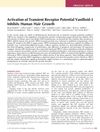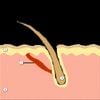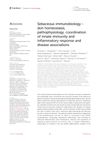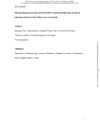Activation of TRPV3 Inhibits Lipogenesis and Stimulates Production of Inflammatory Mediators in Human Sebocytes—A Putative Contributor to Dry Skin Dermatoses
August 2018
in “
Journal of Investigative Dermatology
”
TLDR Activating TRPV3 reduces skin oil production and increases inflammation, potentially causing dry skin issues.
The study explored the role of TRPV3 ion channels in human sebocytes, revealing that TRPV3 activation inhibited lipid synthesis and increased proinflammatory cytokine production, potentially contributing to dry skin conditions and inflammation. TRPV3 agonists like 2-APB and carvacrol increased intracellular Ca2+ concentration, confirming TRPV3's functional expression. Silencing TRPV3 with siRNA reduced these effects, highlighting its involvement. The research suggested TRPV3 as a negative regulator of sebaceous lipid synthesis with significant proinflammatory effects, introducing it as a potential target for treating inflammatory skin conditions. Further clinical studies were recommended to assess TRPV3 inhibitors' efficacy.




